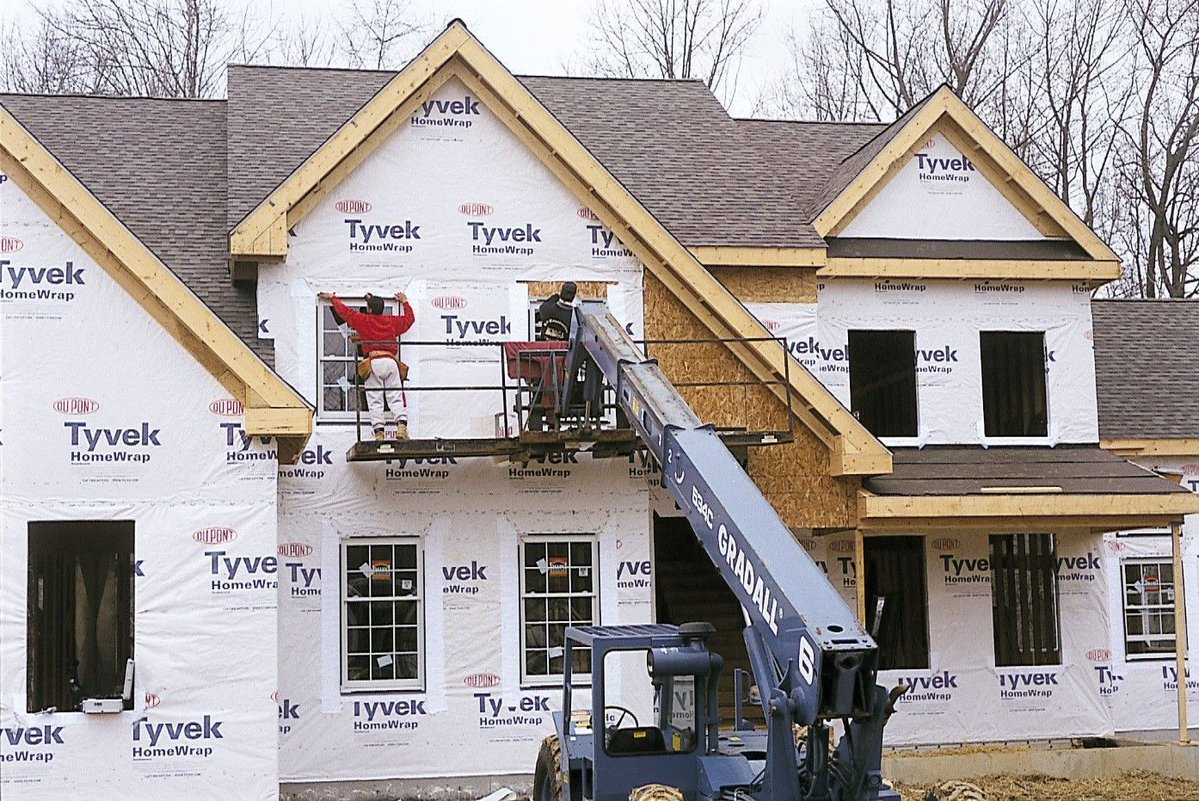First off, what is house wrap one may ask?
House wrap is defined as all synthetic materials replacing sheathing paper. Housewraps are a lightweight material allowing a faster installation procedure by builders and contractors that create a weather-resistant barrier minimizing moisture intrusion and improving a building’s energy efficiency. This type of material will also permit the transfer of water vapor to the outside of the protected structure.
It is a crucial element to the protective layer to a home and an important characteristic of a house wrap because if water vapor is allowed to build up within the studs or walls, moisture and mold will likely decrease and reduce the insulation characteristic or the R-value. R-value, the capacity of an insulating material to resist heat flow. The higher the R-value, the greater the insulating power. Any house that is framed with lumber, which is essentially all, need protection from the outside weather elements.
Fact: The average cost of labor and material for the house wrap is around $0.70 per square foot.
Why is house wrap of such great importance?
The purpose of using house wrap is to prevent the entry of moisture, or rain into the wall cavity. Some sidings are now available that can perform this function, eliminating the need for sheathing paper. House wraps also provide a continuous membrane protection covering all cracks, gaps, and orifices between the exterior sheathing and the rigid foam insulation.
In certain instances, house wrap can also act as air barriers if it is sealed at every seam. House wrap can be resistant to abuse by construction workers because sometimes is left exposed for some time awaiting siding installation to be completed.
A good house wrap material must provide waterproof protection and have a high moisture vapor transmission rate to be considered effective. Some newer designs must be handled carefully to avoid rip or tear from the material. House wrap is intended to be installed over the sheathing and behind the siding, no matter what siding you are using: brick, vinyl, concrete or any other material used.
Types of house wrap:
- Asphalt-impregnated paper or fiberglass
- Micro-perforated, cross-lapped film
- Films laminated or coated to polypropylene wovens
- Supercalendered, wet-laid polyethylene fibril non-woven (Tyvek)
Benefits of house wrap:
- Most house wrap exceeds code requirements for air and water barriers.
- Provide U.V. Protection.
- Available as translucent material for easier installation of the wrap itself and the exterior siding.
- Save homeowner money on heating and cooling costs.
- Some house wrap material offers tear resistance.
- Reduce air infiltration.
- Excellent moisture control on humid climates.
- Allows vapor to flow out of the building.



